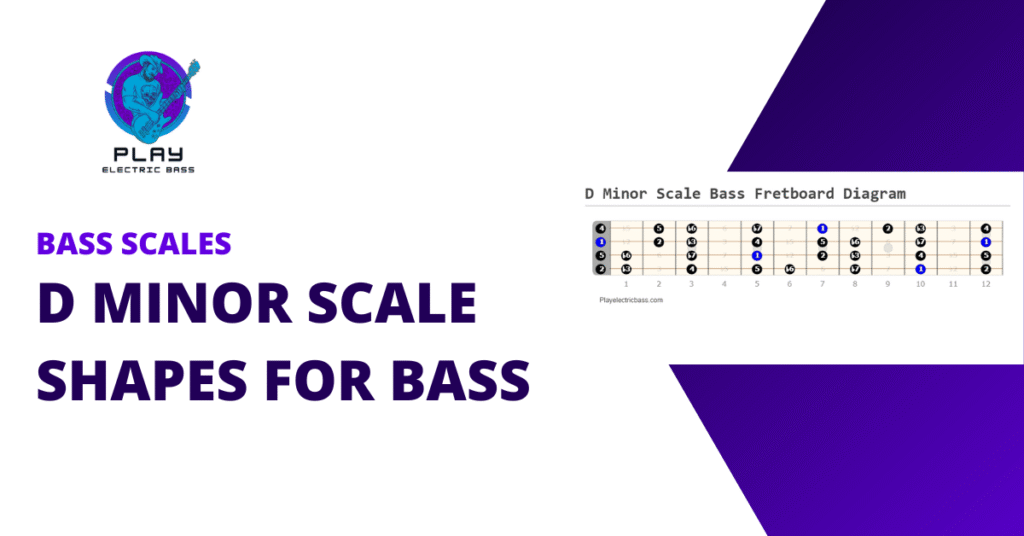This is a D minor scale bass lesson, covering the scale’s notes, all positions on the fretboard, and best tips for practicing.
The D natural minor scale is sometimes considered the “saddest” scale in music, but there’s, not a super compelling reason why.
It is also a well-known scale in rock and metal, specifically because of Drop D tuning.
With those basic ideas out of the way, let’s learn how to play the scale!
Table of Contents
D minor scale bass fretboard diagram (showing intervals)
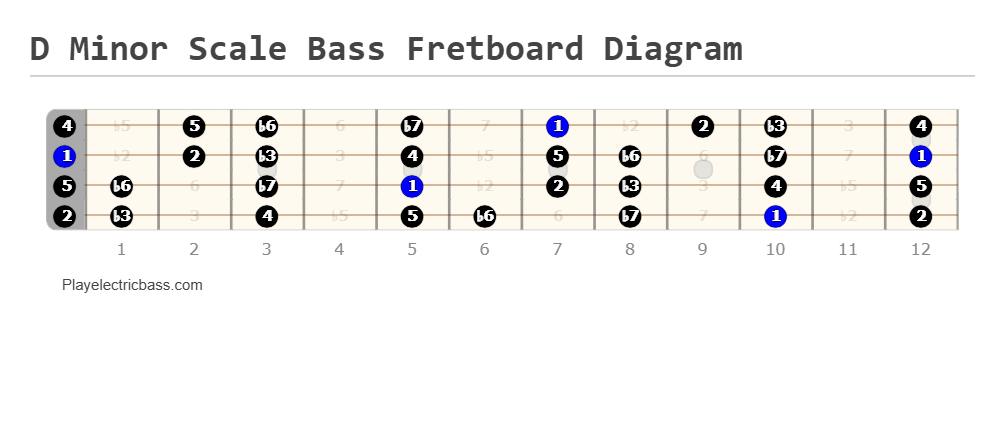
D Natural Minor Scale One Octave Bass Fingering
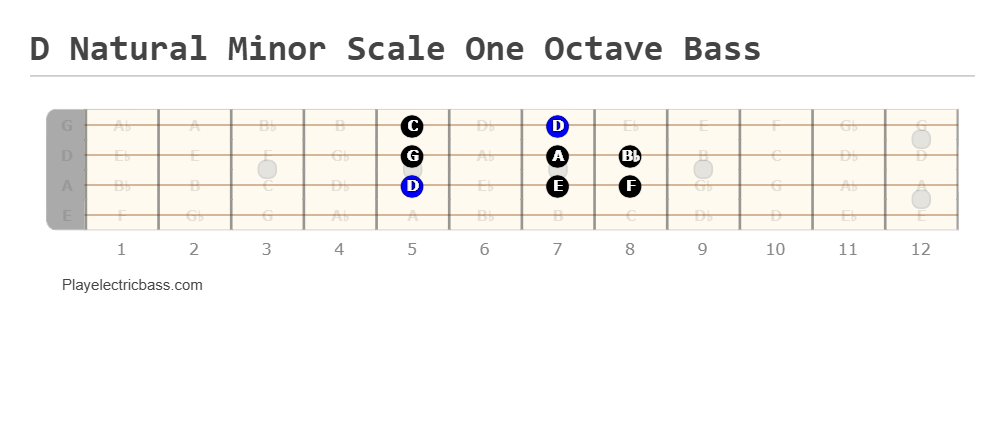
Notes in the D minor scale
D-E-F-G-A-Bb-Care the notes in the D minor scale, for bass guitar and any other instrument.
Chords in the D minor scale
Understanding the chords in the D minor scale is vital for composition, accompaniment, and improvisation.
| i | ii° | III | iv | v | VI | VII |
| D Minor | E Dim. | F Major | G Minor | A Minor | Bb Major | C Major |
| D Min.7 | E Min.7b5 | F Maj.7 | G Min.7 | A Min.7 | Bb Maj.7 | C7 |
D minor scale bass: All positions
Here are the 7 positions of the D minor scale for bass, played using 3 notes-per-string. This gives you a shape for each degree of the minor scale, making it easy to play the scale with ease as you navigate the neck.
Also note: these shapes will work for the F major scale and all of its modes, because they are “related” to the D minor scale.
Position 1
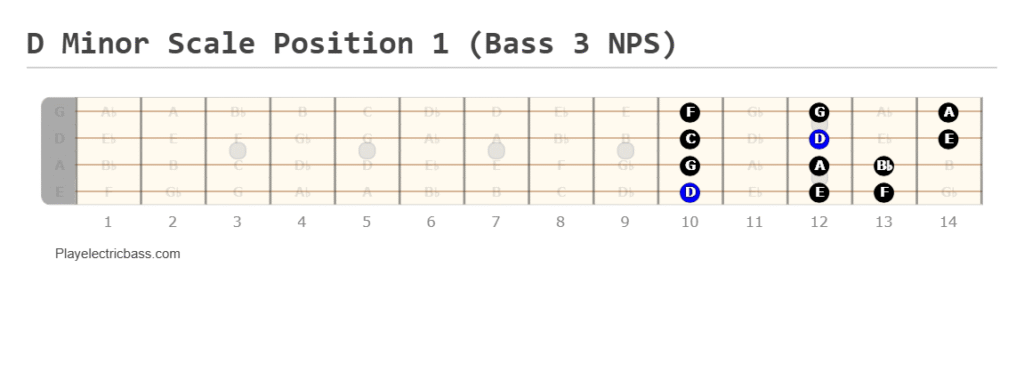
Position 2
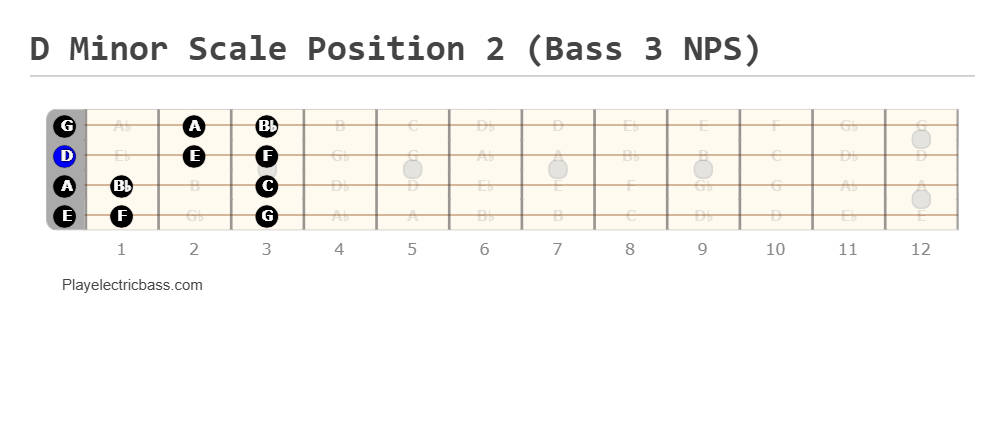
Position 3
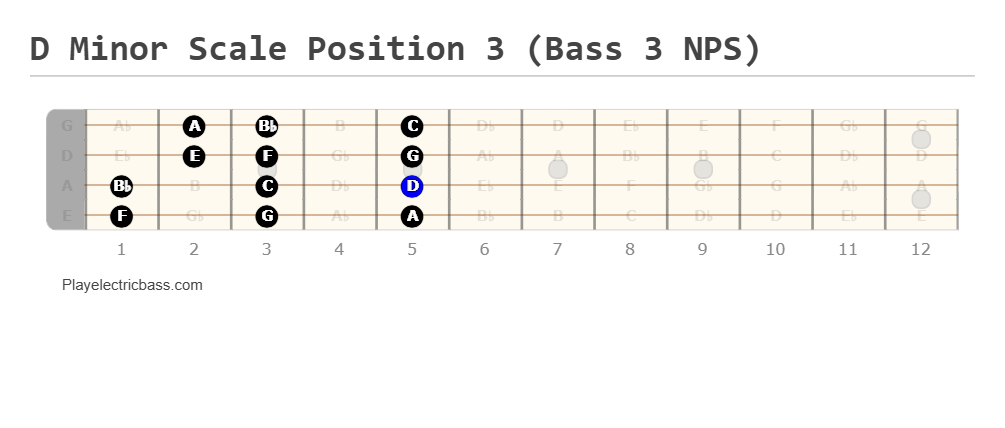
Position 4
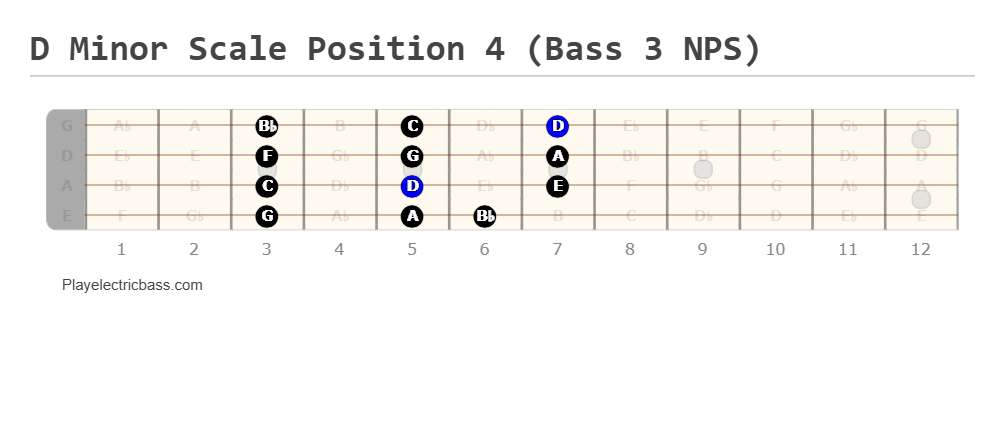
Position 5
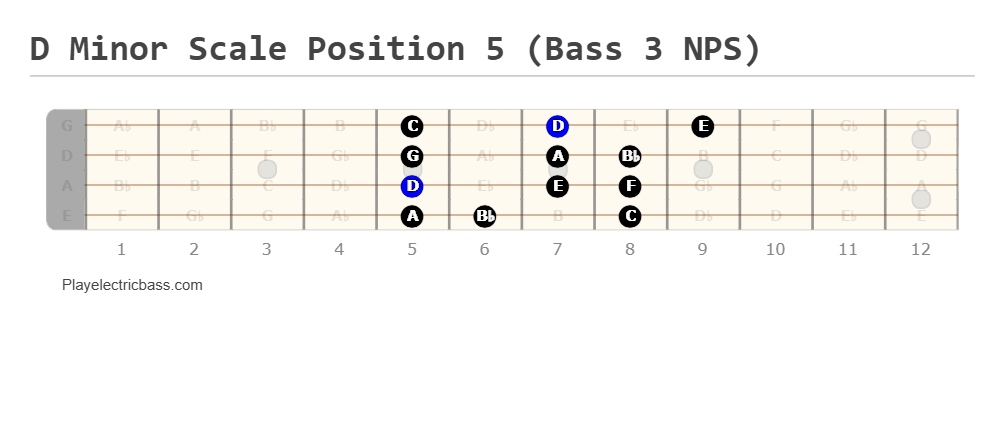
Position 6

Position 7
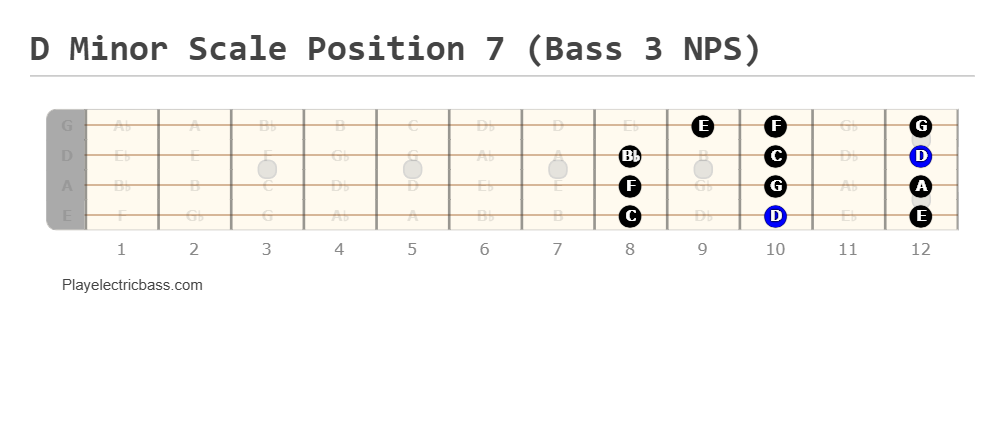
D minor scale bass tab PDF
What’s Next?
Now that you’ve taken a look at the D minor scale all around the fretboard, you can start improvising and writing music with the scale!
For starters, try jamming over a D minor bass backing track, like this “spacey fusion” track.
Next, tune your bass to drop D and play the D minor scale on both the low D and high D strings, by following the notes shown in the fretboard diagrams from earlier. This makes it super easy and fun to write rock and metal riffs on your bass.
Tool is a great example of a band that uses Drop D.
(Tune to drop D by dropping your E string down a whole step)
Lastly, practice this D minor arpeggio shape, which makes it easier to visualize the 3 primary tones in the scale: The root (D), the minor 3rd (F), and the 5th (A).
That’s it, thanks for reading!
Feel free to join my free electric bass community on Facebook, and chat about bass!

